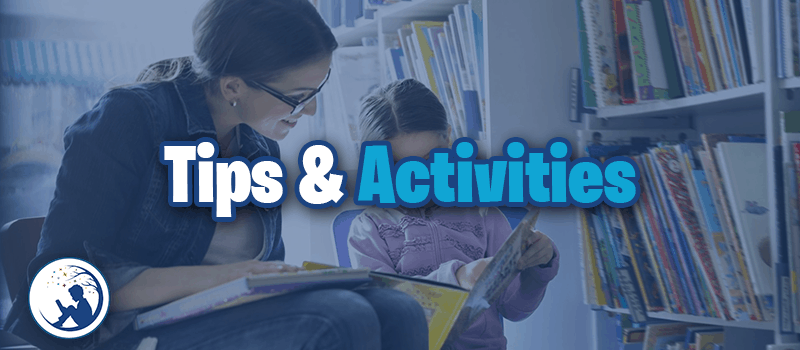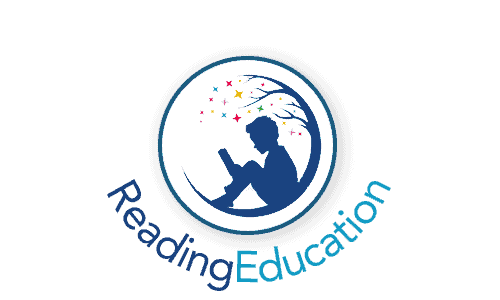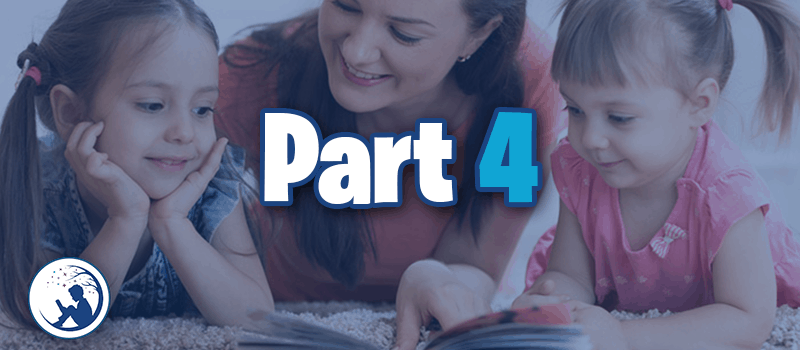Welcome to the fourth part of our ‘Teaching Your Child to Read Year-by-year’ series! In this set of articles, we’ll be looking at what your child will be learning at nursery or school and what you can do to further their reading skills at home. We’ll focus on eight age groups, which are as follows: Ages 3-4 years; ages 4-5 years, ages 5-6 years; ages 6-7; ages 7-8; ages 8-9; ages 9-10; ages 10-11. There will be one dedicated article for each age group, as well as links to all the other articles in this series to make navigation between articles as straightforward as possible (see the bottom of this page for links to other articles in this series).
Learning to Read: Children Aged 6-7 Years Old
By the ages of six and seven, your child will be developing an array of reading skills. By this point, they will typically have a firm grasp and knowledge of phonics and continually growing comprehension skills – the combination of which will help them to read a broader range of books, in addition to reading with greater confidence and fluency.
What will your child be learning at school?
As your child moves up through school, what they are taught will become more complex, expansive, and seek to test their reading skills to a greater extent. Typically, this will include:
Decoding complex words using phonics. At the ages of six and seven, your child will be increasing their understanding and ability to read more complex words using phonics. Your child will be taught sounds letters make and how to put them together to read words. By this age, they will typically be able to read words fluently and be confident enough to try to read words they are unfamiliar with.
Blending and recognising alternative graphemes sounds. At this stage of learning, your child will continue to be taught, which sounds different letters represent. They’ll be able to read the separate letters within a word and have the ability to blend them together to read the full word. In addition, your child will be presented with words that have two possible pronunciations – for example, ‘read’, which is because alternative sounds for the letters exist, i.e. the same letters can be pronounced in different ways. The ‘ea’ in words such a read and lead can be pronounced /e/ or /ea/. Therefore, your child will have to think about the word and make a choice about how it is pronounced.
Reading words that include common suffixes. At this stage of school, your child will learn how to read words they’re already able to decode but have an ending added to them. However, these suffixes will be a little more complex than the previous ones they have learnt. For example, adding ‘ness’ (madness), ‘ily’ (merrily), and ‘ful’ (joyful).
Reading words accurately and with speed. By the ages of six and seven, your child will have had hours upon hours of reading practice; therefore, it is highly likely that will not need to ‘sound out’ and ‘blend’ the letter sounds in the majority of words. Instead, they will have the ability to read words quickly from memory. However, there will, of course, be many unfamiliar words that will require decoding.
Reading some books aloud. At this stage of their reading, your child should have a firm grasp of phonics and be able to recognise tricky words on sight – the combination of which will enable them to read books (of the right level) independently, sounding out unknown words with confidence.
Re-reading books to develop further confidence and fluency. As mentioned in earlier parts of this series, re-reading books is one of the best ways for a child to become a confident and fluent reader. Re-reading will be encouraged as part of the learning process.
Listening to and talking about a wide array of texts. By the age of six and seven, your child will be well on their way to becoming a fluent reader. They will have the ability to understand texts that are too complicated for them to read themselves. For this reason, the majority of the books teachers use for the purposes of comprehension are those that will be read out loud to them.
Understanding a greater range of books they read and listen to. At this stage of learning, your child will continue to build their reading comprehension through a variety of strategies, including, but not limited to:
– Discussing the happening in stories and why stories have the specific titles they do.
– Making predictions on what might happen next in a particular story based on what has happened so far.
– Ensuring the text makes sense, and any inaccuracies in their reading are corrected.
Reading Tips & Activities for 6-7 Year Olds

By the ages of six and seven, your child’s reading skills will be developing quickly, and their grasp of the various core components of reading (phonics, phonemic awareness, vocabulary, fluency, and reading comprehension) will be growing also. To help further their reading abilities, here are a handful of tips, games, and activities you can do at home:
1. Reading with Expression
By now, it is highly likely that your child will be bringing books home to read aloud to you; therefore, it is important that you make time for this on a daily basis. When listening to your child read, assist them in decoding any words that aren’t familiar to them, encouraging them if they get stuck. Our top tip here is to always be patient and impressed with their reading as this will help them to build fluency and confidence.
Reading expression of children aged six and seven might often sound stilted on the very first sentence or page of a book. This typically occurs because they are focusing on connecting the letters to sound and then blending the sounds to make words. To ensure that your child stays focus and interested, read it again with expression – followed by a good dollop of praise too, of course!
2. Read to Your Child
Reading to your child is a recurring theme in their early years of learning to read. Why? Because it is so valuable to their present and future reading skills. Your child will learn a vast amount about how language structure from reading, speaking and listening. That being said, the type of language we typically use in writing is different from that used in speech; therefore, by consistently reading to your child – particularly books that are beyond their own current reading abilities – you will help to enhance their vocabulary and improve there overall understanding of language.
3. Mix it up!
Combine fiction and non-fiction when selecting books for you and your child to read. Stagnation and disinterest can slow down learning; therefore, it is essential to keep reading fresh, fun, and interesting! When choosing books, alternate between yourself and your child. Some days they’ll choose the book, other days you’ll choose it. Variety s often referred to as ‘the spice of life’ – and this ensuring variety with the type of books you read will help your child to progress.
4. Talk, talk, and talk some more!
Learning to read isn’t just about reading – it’s about talking about what has been read too. When reading a book with your child, get into the habit of talking about the characters, what’s happening the story, what your child thinks of the story or the information in the book if it’s non-fiction. Asking their opinion on the book is important as it gives them an opportunity to be honest, which you should encourage them to be as not liking a book is totally fine!
5. Re-reading should be encouraged
As we briefly touched upon above, re-reading is something that we encourage. Although the natural instinct of a parent who wants their child to progress quickly is to continually give them new books that are as challenging as possible, re-reading old books is highly beneficial. Not only does it allow them to solidly their knowledge and understating of certain words and phrases, but it also allows them to think about the events in the book again, which may lead to different ideas and thoughts.
6. Phonics Practice
By the ages of six and seven, your child will have a wealth of reading practice ‘under their belt’, which means it’s highly likely they’ll not sound out and blend together the sounds in the vast majority of words. However, words unfamiliar to them will still need to be decoded; therefore, it’s essential for your child to use sounding out for any words they’re unsure of.
Thank you for taking the time to read our blog; we really appreciate your time and hope you found this article informative and helpful. If you’re interested in reading the other posts in the ‘Teaching Your Child To Read Year-By-Year’ series, please use the links below:
Part 1 (Ages 3-4)
Part 2 (Ages 4-5)
Part 3 (Ages 5-6)
Part 5 (Ages 7-8)
Part 6 (Ages 8-9)
Part 7 (Ages 9-10)
Part 8 (Ages 10-11)
Thanks again for your time! If you have any comments, questions, or suggestions, please don’t hesitate to get in touch!

